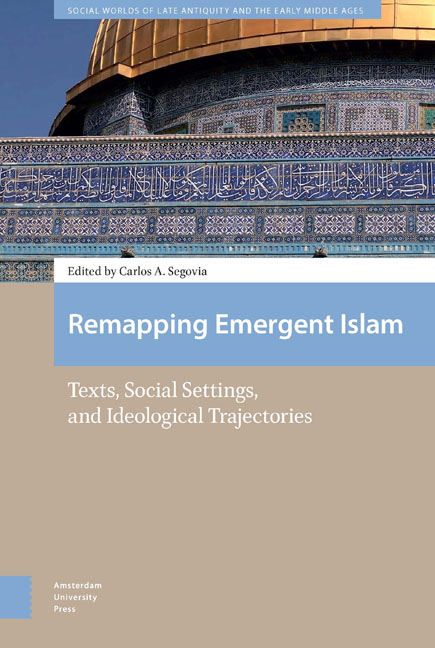Book contents
- Frontmatter
- Contents
- Introduction
- Part 1 Re-Assessing the Hypothesis of a Peripheral Jewish Background
- Part 2 An Encrypted Manichaean / Messalian Matrix?
- Part 3 Measuring the World’s Timeline… and Imagining the Afterlife at the Persian Court?
- Part 4 Conceptual Quicksand, Meta-Narratives of Identity, Texts and their Marginalia
6 - The Persian Keys of the Quranic Paradise
Published online by Cambridge University Press: 24 November 2020
- Frontmatter
- Contents
- Introduction
- Part 1 Re-Assessing the Hypothesis of a Peripheral Jewish Background
- Part 2 An Encrypted Manichaean / Messalian Matrix?
- Part 3 Measuring the World’s Timeline… and Imagining the Afterlife at the Persian Court?
- Part 4 Conceptual Quicksand, Meta-Narratives of Identity, Texts and their Marginalia
Summary
Abstract
The descriptions of paradise are numerous and precise in the Qur’ān: in relation to their total coherence with one another, they surely come from a unique source. Furthermore, they reflect a social model present in many regions of the seventh-century Near East: the Persian banquet, as enjoyed in the Sasanian Empire. Not only the vocabulary, but the objects, the people, the physical or mental attitudes, the food, and the beverages are all taken from the imagery of the banquets at the Persian court. Hence the quranic paradise is clearly not of religious, but of profane origin. And this offers evidence that one should consider not only Palestine, but also Mesopotamia, as a source of inspiration for the authors of the Qur’ān – and as a site of excavation for the original quranic milieu.
Keywords: Late Antiquity, Early Islam, Qur’ān, Paradise
This chapter is truly a matter of remapping, geographically speaking, and the metaphor of a map is well deserved. For once in Islamic studies, the compass shows north, without doubt. It is possible to prove, mostly through the use of some very specific verses of the Qur’ān, and by the means of material culture, that quranic eschatology was inspired by the socio-cultural milieu of contemporary Iran and Mesopotamia, ruled by the mighty Sasanian empire, then north of Arabia: a way rarely, if ever, explored by scholars. The main attempts thus far have been due to Shaul Shaked, but they stopped just before the Rubicon, and still refused to establish a link between the Qur’ān and Realia. They could have been enhanced by other, better known evidence for Iranian, Manichaean, or Zoroastrian influence on the Qur’ān. It can be added that even Jewish and Christian ideas could come more directly from Mesopotamia, where those communities flourished at the time. What is certain is that the inspiration to create this image of paradise is twofold: it is conceived, first, as the inversion of a displeasing situation (real or imaginary), and second, it is conceived from elements of the surrounding area, but in historical times (namely Mesopotamia). The alternative should have been to borrow some aspects of Jewish-Christian paradises: but those were not developed enough, nor seductive enough, and they were too easily recognisable.
- Type
- Chapter
- Information
- Remapping Emergent IslamTexts, Social Settings, and Ideological Trajectories, pp. 149 - 174Publisher: Amsterdam University PressPrint publication year: 2020

